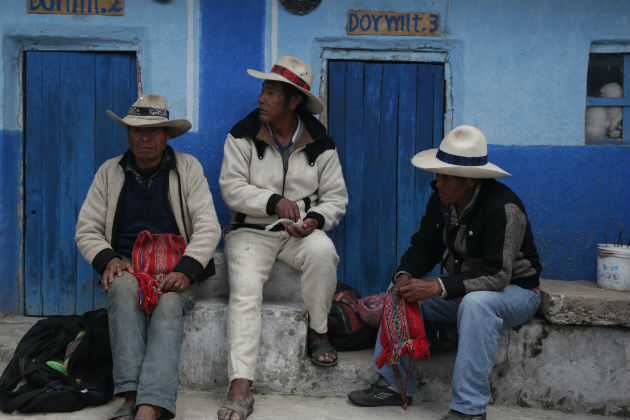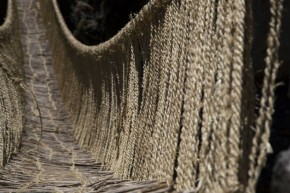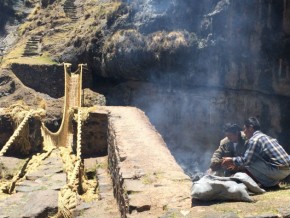The Spirit of the Inka Survives in the Q'eswachaka Bridge

Hanging across the Apurímac River in Huinchiri, Peru, is the world’s last remaining traditional Inka rope bridge: the Q’eswachaka. Every year, four Quechua communities come together to rebuild the six-century-old bridge, ceremonially casting the previous one into the river.
As a chakakamayoq (bridge building specialist), Victoriano Arizapana Huayhua leads this annual rebuilding project. This year, Arizapana Huayhua will represent his community and his craft in the Smithsonian Folklife Festival’s Perú: Pachamama program, featuring a replica of the Q’eswachaka in the center of the National Mall.
In October 2014, translator Jesús Galiano Blanco and director Isabel Hawkins from the National Museum of the American Indian research team interviewed Arizapana Huayhua about his family’s work on the bridge and its importance to the local community.
What is your position regarding the work on the Q’eswachaka bridge?
My responsibility is to organize the change and maintenance of the bridge every second week in June because I know how it needs to be done. I lead by birthright as the heir to that knowledge from my grandfather and father. The Awkis (Andean deities) remind us that that knowledge and wisdom should be passed on to one bloodline only, that knowledge and wisdom should not be extended to just anybody. My grandfather received the knowledge from his grandfathers. They would build the bridge and take care of the upkeep. When my grandfather died, my father continued to do the work and when my father died, I kept that knowledge.


What is the story behind the bridge?
The bridge was built by our ancestors, the Inka. To be able to cross the great and powerful Apurímac River, our Inka ancestors from the village of Livitaca and all the other villages from this area built this bridge. They were wise and powerful. By crossing that bridge, they could travel to other areas like Cusco, Sichuan, the valleys, and even the coast, taking their products on their llamas in exchange for products that they didn’t have here.
This bridge is over 500 years old. Back then, the Spaniards had arrived to these lands and were chasing and killing our Inka ancestors, who then organized to counter the Spaniards. They crossed the Q’eswachaka bridge with the Spaniards close behind. Before the Spaniards could cross too, the Inka cut it down. There, many Spaniards died, and that is how many of our ancestors were saved. After a time they went back to build the bridge again. My grandfather told me this story when I was a child.
What does the bridge mean to you?

For all four of our communities, our Q’eswachaka is a greatly beloved and respected monument. It has life and power. For us, the bridge is the soul and spirit of our Inka that touches and caresses us like the wind. That is why, to be able to touch it or cross it, the first thing we do is make a payment or put something on its plate and ask permission. Then we can cross.
No matter what happens, anything that comes our way, we are not going to allow anything to happen to our bridge. We are strong, we are Q’eswachaka, and we are going to take care of it, keep it respected and revered like we have been doing so far.
If we stop preserving it, it would be like if we died. We wouldn’t be anything. Therefore, we cannot allow our bridge to disappear. My son is already learning a lot about building and keeping our bridge. When I die, he, along with his brothers from our communities, will keep this bridge.
The Perú: Pachamama program at the 2015 Smithsonian Folklife Festival opens June 24. Visit the National Mall to see Victoriano Arizapana Huayhua and his team construct a replica of the Q’eswachaka. This interview was condensed by media intern Georgia Dassler.

